Ground source heat pumps, also known as geothermal heat pumps, have emerged as a cleaner and more efficient alternative to traditional central heating systems. However, the technology is not suitable for every property. For people who are interested in geothermal heat pumps, it is important to understand the pros and cons of the ground source heat pumps.
Ground source heat pumps are environmentally friendly, boast a long life span and provide year-round heating and cooling. They offer high efficiency and cheaper running costs than conventional boilers. However, their installation is expensive and can be disruptive. You may need a lot of land for installation.
| Pros | Cons |
| Low running costs | High initial cost of installation (for regions with no cost incentives) |
| High Efficiency | Installation process disrupts land topography |
| Environmentally Friendly | System can contaminate groundwater. |
| Provides both heating and cooling all year round. | May not be compatible with existing radiators. |
| Long service life(over 50+ years) | Limited Service Options |
| Compatible with smart thermostats which aid with ease of operation. | Requires ample land space for the installation of ground loops. |
| No noise pollution while in operation. | Uneven ground temperatures |
| Government incentives to reduce installation costs. |
In this post, we are going to discuss everything you need to know about the advantages and disadvantages of ground source heat pumps. Our goal is to help you make an informed decision.
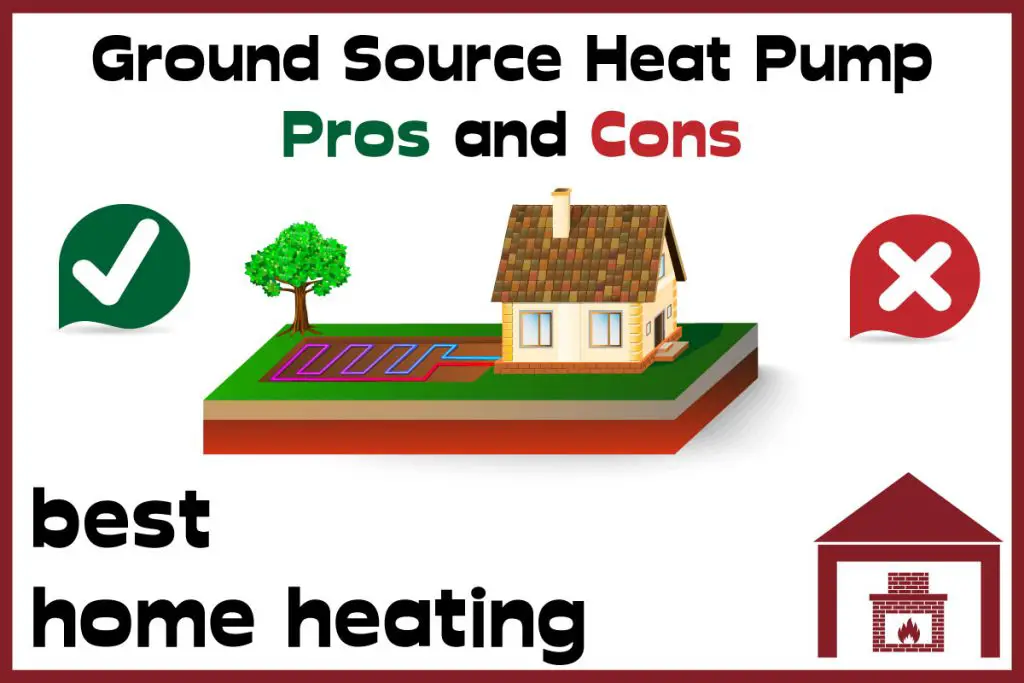
How Does a Ground Source Heat Pump Work?
About 10 feet below the surface, the ground has a constant temperature of 10-12°C year-round, regardless of weather conditions. That’s because the ground soaks up the sun’s rays and stores the heat. Geothermal heating and cooling systems work by tapping into this energy.
An underground pipe system filled with a refrigerant fluid is installed to access the ground’s constant temperatures. In summer, when the earth is cooler than your home, the refrigerant transfers heat from your home to the ground. The warmer fluid naturally cools off as it comes into contact with the ground. The fluid then returns to your home and extracts more heat.
First, let’s see how a ground source heat pump works in more detail. How does the heat transfer from the ground to a radiator in the first place?
- A ground source heat pump takes advantage of the sun’s energy stored underground. Underground pipes, designed to allow heat transfer through their walls, are installed to access the ground’s constant temperature.
- The fluid running through the array of ground pipes is a mixture of water and antifreeze. This mixture absorbs the low-grade heat from the ground array as it circulates. Lots of heat energy can be absorbed this way due to the length and surface area of the pipes.
- On its return to the control hub, the water-antifreeze mixture enters a heat exchanger, also known as an evaporator. The heat exchanger has two sealed-off compartments, one housing the flowing water-antifreeze mixture, and another holding a volume of refrigerant. The two liquids never mix together.
- The heat energy in the water-antifreeze mixture, which has been absorbed from the ground, then diffuses through the pipes in the heat exchanger and into the refrigerant liquid, which then boils into a gas due to its very low boiling point. The water-antifreeze mixture continues to circulate back into the ground loops for another cycle.
- The gas is then fed into a compressor, which increases the pressure of the gas and hence its temperature. This hot gas then flows into a second heat exchanger, known as the condenser. This component is very similar to the evaporator heat exchanger which transferred the heat from the water-antifreeze mixture. However, this time it transfers heat from the refrigerant gas and into a flowing water circuit which can then go off to heat the home via radiators or underfloor heating, or perhaps heat the water supply to the taps.
- The refrigerant gas that has lost its heat then condenses back to a liquid as it cools beneath its boiling point. It then passes through an expansion valve, reducing the temperature and pressure and circulating back to the evaporator heat exchanger ready to meet more warmed water-antifreeze mix and to repeat the cycle.
You can learn more about how radiators combine with ground source heat pumps by watching this video from Kensa Heat Pumps on Youtube.
In the wintertime, the underground temperature is higher than the temperature inside your home. Therefore, the refrigerant inside the pipes transfers heat from the ground to your home. The fluid travels via a compressor, which raises its temperature. An underfloor heating system is used to distribute the heat inside your home. The temperature inside your home remains comfortably warm.
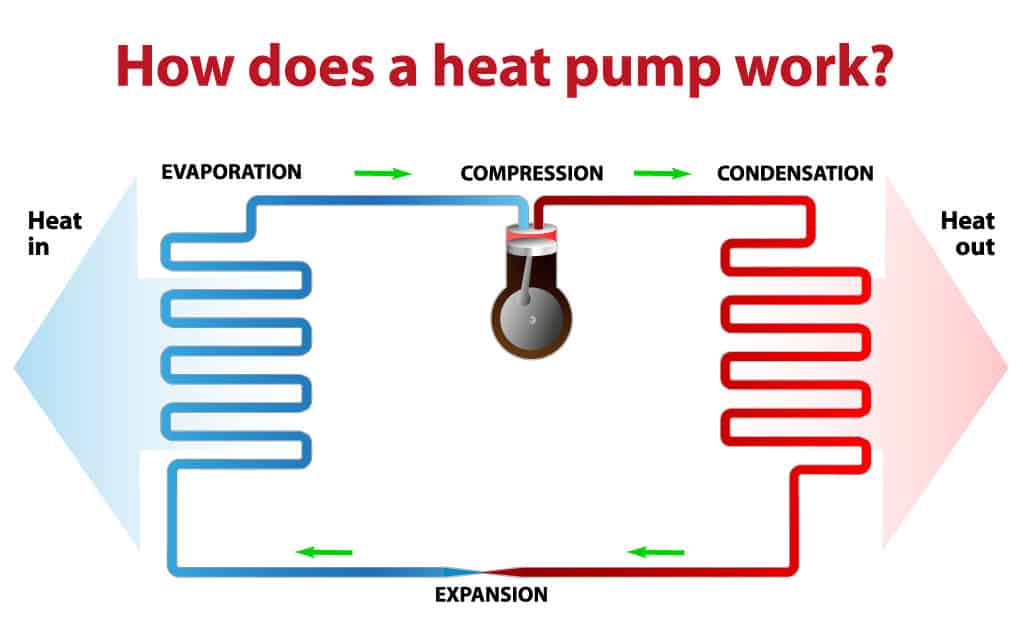
Pros of Ground Source Heat Pumps
Low-energy consumption is the hallmark of a ground source heat pump, but this is just one of the benefits offered by the system. Here are some of the reasons so many homeowners are showing interest in geothermal heat pumps:
Low Running Costs
A geothermal heat pump can produce 3-4 units of heat for each unit of electricity. The system can save up to 70% on heating costs and 50% on cooling costs, according to the Environmental Protection Agency (EPA).
If a property has an annual heat load of 15000kWh and if electricity costs around 15p per kWh, the running cost of an underfloor heat pump will be £540-£700 per year. To provide heating for the same property, a gas boiler will cost around £890 per year.
Environmentally Friendly
Geothermal heating is one of the most promising low-carbon heating solutions. Unlike furnaces and boilers, ground source heat pumps do not use fossil fuels. Compared to a traditional central heating system, a geothermal heat pump emits 70% less carbon dioxide.
Since this system makes use of electricity that could be generated from fossil fuels, it cannot be categorized as carbon-free.To achieve this, the system could be made to run on solar energy or another renewable source.
There are environmental downsides, however, including alterations made to soil temperature and water flow within the ground, as well as a potentially disruptive installation.
Check out this dedicated article that examines the environmental impact of ground source heat pumps in more detail.
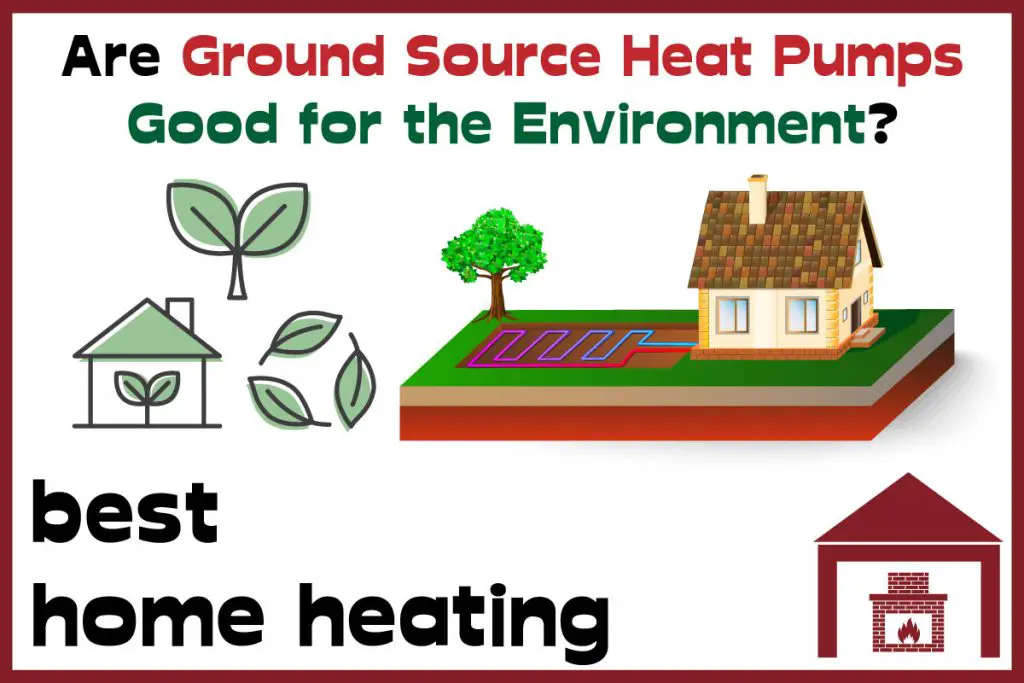
Provides Both Heating and Cooling
A ground source heat pump is actually a two-in-one HVAC system. The term “heat pump” is a bit misleading because the system provides both heating and cooling. It provides heating during the cold months, and the operation is automatically reversed in the summertime.
That means it keeps your home comfortable throughout the year. For more information on how heat pumps provide cooling, visit here.
Check out this dedicated article that examines heat pump cooling in more detail.
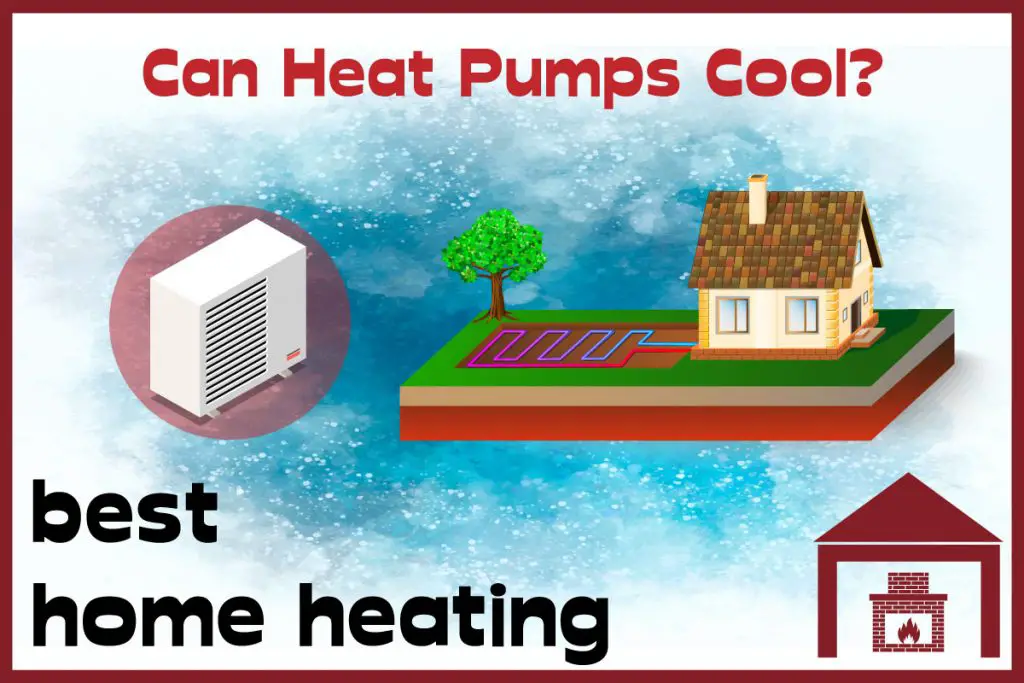
Suitable for Almost all Climates
The efficiency of a geothermal heat pump is not affected by warm or cold climates. This is not the case with an air source heat pump, which is affected, to some extent, by outdoor air temperatures.
The temperature underground does not fluctuate; it remains almost constant throughout the year. This feature makes geothermal heat pumps a viable heating solution for people living in extremely cold places. Although if the ground loops are not situated well below the frostline, the efficiency of the system could be affected by extreme winter conditions.
Safe
Geothermal heat pumps are safer than conventional central heating systems such as oil-fired or gas-fired boilers. Geothermal heating has fewer safety concerns because it relies on electricity, not fuels. A geothermal heat pump poses little risk of breakdown and no risk of a carbon monoxide leak. The system is typically paired with underfloor heating, which is considered safer than radiators.
Less Maintenance
If well-installed, a geothermal heat pump requires very little maintenance. Just an annual checkup is enough, and you can do it yourself; no need to hire an engineer. No technical knowledge is needed for maintaining the heat pump and optimizing the system’s performance.
The number of moving parts in ground source heat pumps are fewer than those of a traditional heating system.
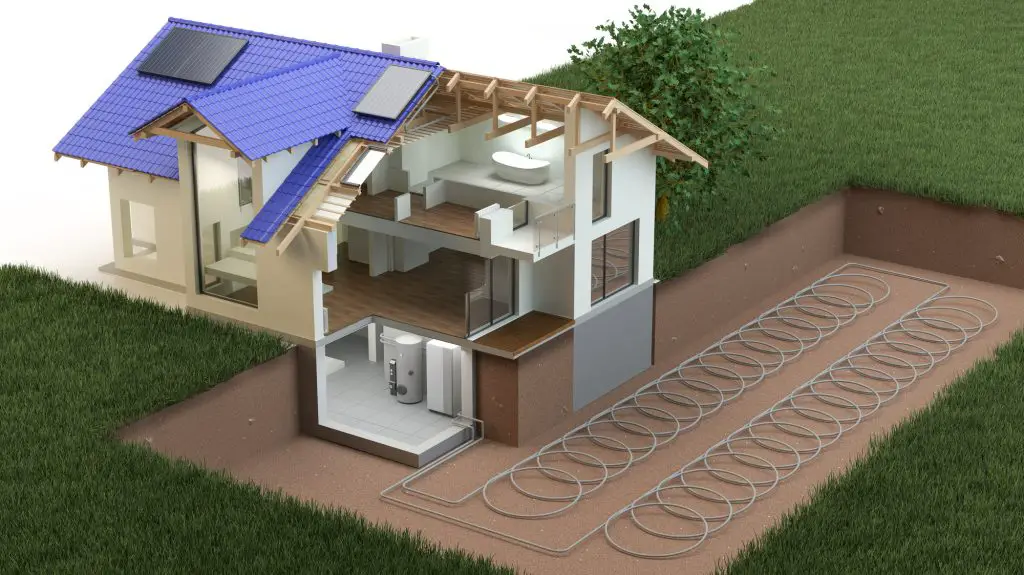
Durable
Compared to combustion-based heating systems, ground source heat pumps are significantly more durable. The inside components of the system last up to 25 years, and the ground loop has a lifespan of over 50 years. The heat exchanger is the most durable part of the system. It has a lifespan of over a century.
Compatible with Smart Thermostats
Geothermal heating systems are compatible with most smart thermostats; with which you can control the temperature of your heat pump even when you are away from home.
Nest is one of the most well-known brands of smart thermostats for heat pumps. The company has a compatibility checker that allows you to check the compatibility of your heat pump. Ecobee, Sensi, and Honeywell are three other reliable manufacturers of smart thermostats.
Virtually Silent
One of the best things about ground source heat pumps is that they aren’t noisy. Some are so silent that you have to touch the pump to know if it’s running. However, if there’s something wrong with the system, a geothermal heat pump can create a little bit of noise, which is nothing compared with that of a traditional fuel-burning boiler.
The noise from ground source heat pumps under peak working conditions is usually not more than 42 decibels. For context, this is equal to the sound of a chest freezer under working conditions.
In most cases, addressing the noise issue is easy and inexpensive. A technician can help, but you may be able to address the issue without the help of a technician.
Can Be Used to Heat Swimming Pools
Ground source heat pumps can be used to heat both indoor and outdoor, domestic and commercial swimming pools of various shapes and sizes. Cutting-edge geothermal heat pumps are highly customizable and can meet the required heat load.
Hydronic geothermal heat pumps are the most commonly used heat pumps for heating pools. Nearby oceans, lakes, wells, or ponds are used as the source of energy. This method is affordable, efficient, and environmentally friendly.
Check out this dedicated article that examines whether a swimming pool can be heated effectively using a ground source heat pump.

No Large Outdoor Unit
Once a geothermal heat pump has been installed, no external equipment is visible. You don’t have to deal with external fans or a large outdoor unit. The loops remain out of sight because they are buried underground.
Improved Air Quality
Ground source heat pumps can contribute to reducing air pollution. The system works without combustion, and there is no point-of-use emission. No particulates, CO2 emissions, SOx, or NOx.
A ground source heat pump is a dream come true for environmentally conscious people, given the fact that a typical non-condensing gas boiler used to heat a three-bedroom property produces about 3kg of NOx emissions per year.
Cons of Ground Source Heat Pumps
While geothermal heating has a lot of advantages, the technology has some drawbacks. Before you dive in, consider these disadvantages and meticulously weigh the pros and cons.
High Upfront Cost
Installing a geothermal heat pump costs between $10,000 and $30,000, depending on the pump’s size. And an underfloor heating system, which is typically paired with a heat pump, will add to the cost. This high upfront cost is one of the reasons why ground source heat pumps have not yet become wildly popular. To put the cost in perspective, a new boiler costs around $4000.
Here is another thing to take into consideration. A ground source heat pump works well in a home that is properly insulated. Roof insulation, cavity wall insulation, and double glazing will incur further expenses.
Use of Space
Geothermal heat pumps are only suited to homes with reasonably sized outdoor spaces. To install a ground source heat pump for a mid-sized house, you need an additional 2.5 times the area of the house.
If your home doesn’t have a space for burying the pipes, a ground source pump is not a viable option for you. Installing the ground loop system, particularly a horizontal loop setup, requires above-ground alterations for digging trenches.
These alterations can change the appearance of the landscape. Horizontal ground loops require a smaller space, but the spot should still be large enough for the operation of heavy machinery.
Check out this dedicated article that examines how much land you need for a ground source heat pump, both horizontal arrays, and vertical boreholes.
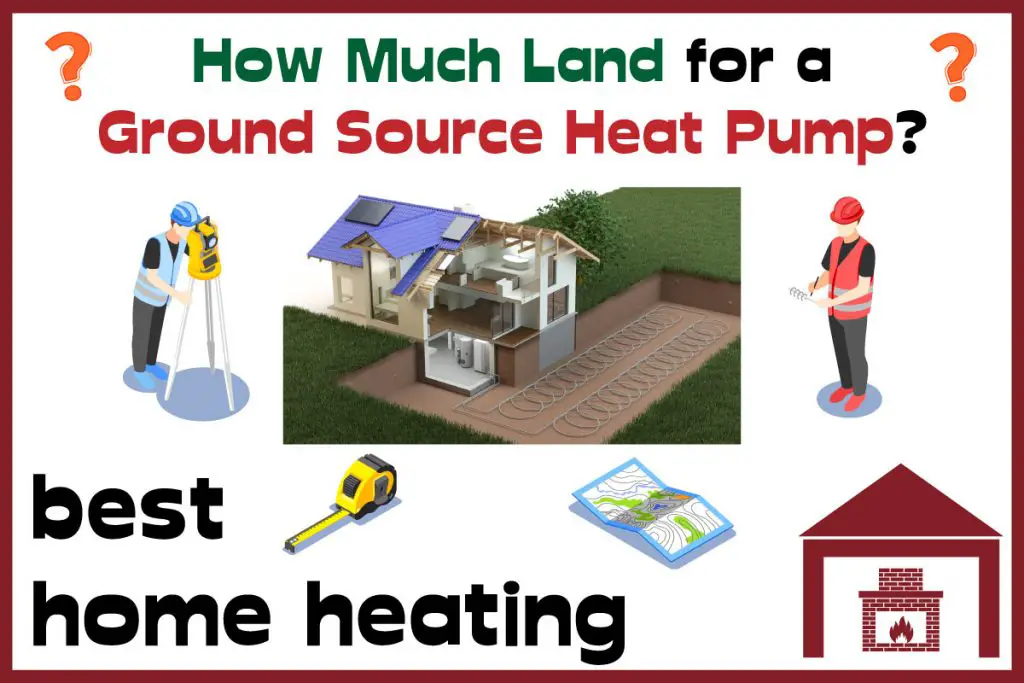
An Open-Loop System Can Contaminate Groundwater
Most geothermal heat pumps are closed-loop systems. But if you choose an open-loop system, which is less costly and more efficient, there’s a risk of groundwater contamination. This is because an open-loop system directly cycles natural groundwater. The water passing through the pump can contaminate the source the system is pulling from.
The contamination results from the type of refrigerant or antifreeze used in the ground loops. R22 and R404a can cause severe water pollution since they contain Hydrochlorofluorocarbons(HCFC). See besthomeheating.com for more information on refrigerants, antifreeze, and groundwater contamination.
Permits may be Required
In general, the installation of a geothermal heat pump does not require an application for permission. However, depending on where you are living, you may need a permit. In Wales and Northern Ireland, permissions are required. It’s mandatory to contact the council for planning permissions in some places in England and Scotland.
Supplementary Heating
Your geothermal heat pump may not provide sufficient heating on extremely cold days. And therefore you may need to invest in a backup heat source, such as a furnace. When the outdoor temperature drops to minus 20 degrees Fahrenheit, the auxiliary heating system provides emergency heat.
In general, a ground source heat pump provides full cooling needs. But it meets only about 80% of seasonal heating requirements during the cold months. The remaining 20% comes from a supplemental heating system.
Landscape Alterations
Since the floor would need to be dug to fit in the pipes, it could lead to permanent alteration of the landscape. Upon covering the pipes, the excess sand would have to be moved elsewhere. Also, trees would need to be moved away from that area, to prevent their roots from interacting with the pipes. This digging could also make the land susceptible to earthquakes.
May Not Be Compatible with Your Existing Radiators
A ground source heat pump is a low-flow temperature system, and therefore it requires a heat emitter with a large surface. That’s why underfloor heating works so well with geothermal heating. In fact, underfloor heating is almost exclusively paired with heat pumps.
In principle, radiators can be paired with ground source heat pumps. But unless you already have large radiators, you will have to replace your existing radiators with larger ones or opt for an underfloor heating system.
Check out this dedicated article that examines whether ground source heat pumps will work with radiators in your home.
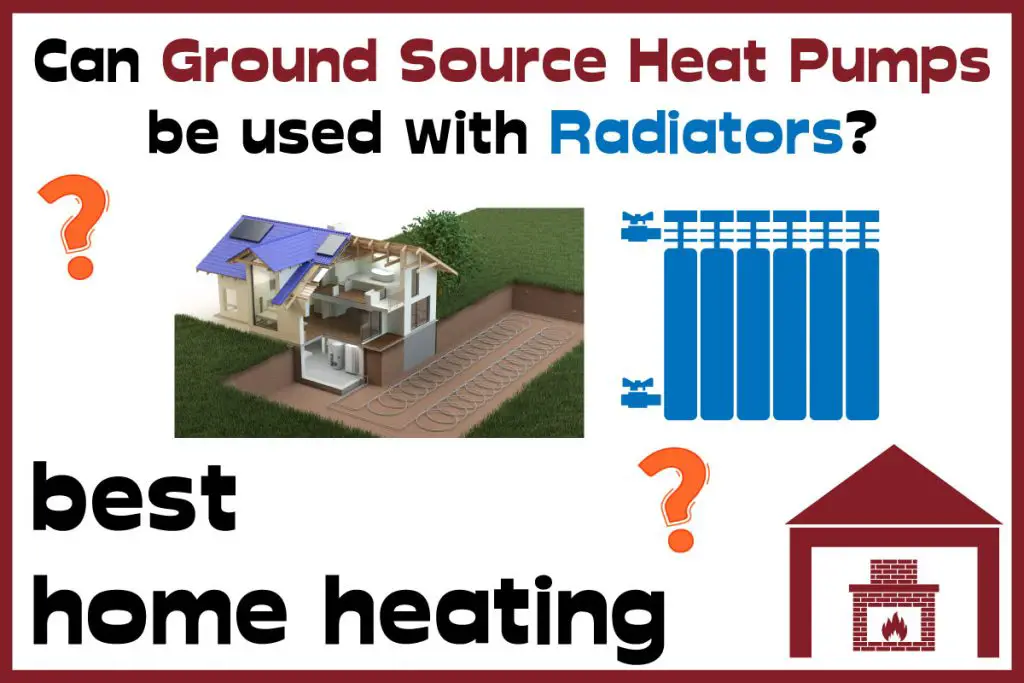
Uneven ground temperatures
This occurs when the ground is not able to recover the heat lost to the property. When this occurs, it could create unstable ground scenarios like ice lenses and permafrost. The ground loops would need to be spread across a larger surface area, to ensure the heat source is large enough to meet the heating demands.
Limited Service Options
There are not many contractors who are familiar with ground source heat pumps. And that means the service options are limited. The efficiency of a geothermal heat pump depends on its installation. If the pump is not properly installed, the savings will quickly evaporate. It all depends on the availability of a reliable provider in your area.
Conclusion
The pros and cons of ground source heat pumps might help you choose this heating system over a conventional boiler. When installed on a property, ground source heat pumps offer a number of advantages.
| Pros | Cons |
| Low running costs | High initial cost of installation (for regions with no cost incentives) |
| High Efficiency | Installation process disrupts land topography |
| Environmentally Friendly | System can contaminate groundwater. |
| Provides both heating and cooling all year round. | May not be compatible with existing radiators. |
| Long service life(over 50+ years) | Limited Service Options |
| Compatible with smart thermostats which aid with ease of operation. | Requires ample land space for the installation of ground loops. |
| No noise pollution while in operation. | Uneven ground temperatures |
| Government incentives to reduce installation costs. |
Often a problem that does arise will stem from an issue present right from the installation itself, which means it is important to go for a trusted installer.
The cost of this system is often tempered by grants and incentives from the government. For example, there is a Renewable Heat Incentive (to be updated to the Boiler Upgrade Scheme) in the UK to reduce installation costs.
This is a means to encourage citizens to take the initiative by ditching traditional fossil boilers for heat pumps. High uptake would lead to a massive reduction in carbon emissions.
If you are building a new home, consider tapping into the amazing benefits of a geothermal heat pump. But before you decide to invest in a ground source heat pump, get informed. Contact a reliable provider, get your property assessed, and learn if geothermal heating is right for you.
Check out all our other information on ground source heat pumps here:
- What Temperature do Ground Source Heat Pumps Produce?
- Do Ground Source Heat Pumps work in Winter?
- Are Ground Source Heat Pumps good for the environment?
- Can Ground Source Heat Pumps work with Radiators?
- Can you combine Ground Source Heat Pumps with Underfloor Heating?
- How much land do you need for a Ground Source Heat Pump?
- Can Heat Pumps Cool?
- How long do heat pumps last? Ground Source Heat Pump Lifespans
- Are ground source heat pumps safe?
